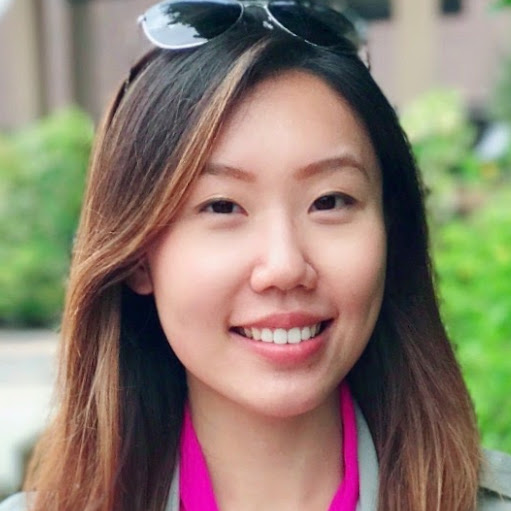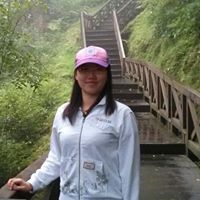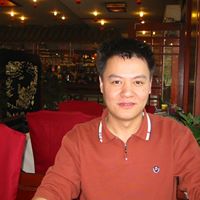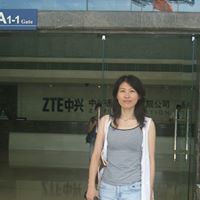Ying Zhao
age ~50
from Austin, TX
- Also known as:
-
- Zhao Ying
- Phone and address:
- 10000 Pickfair Dr, Austin, TX 78750
Ying Zhao Phones & Addresses
- 10000 Pickfair Dr, Austin, TX 78750
- Katy, TX
- 16528 Avaranche Way, Round Rock, TX 78681 • (512)7160770
- Mountain View, CA
- San Mateo, CA
- Sunnyvale, CA
Education
-
School / High School:Columbia Law School
Ranks
-
Licence:New York - Currently registered
-
Date:2010
Lawyers & Attorneys

Ying Zhao - Lawyer
view sourceAddress:
Fen Xun Partners
(866)5059190 (Office)
(866)5059190 (Office)
Licenses:
New York - Currently registered 2010
Education:
Columbia Law School
Us Patents
-
System And Method For Comparing Populations Of Entities
view source -
US Patent:20030020739, Jan 30, 2003
-
Filed:Jul 26, 2001
-
Appl. No.:09/917409
-
Inventors:Jeremy Cohen - Sunnyvale CA, US
Ashok Srivastava - Mountain View CA, US
Ying Zhao - Cupertino CA, US -
International Classification:G09G005/00
-
US Classification:345/700000
-
Abstract:The present invention provides management of entity profile data to effectively process, analyze, and review entity profile data. More specifically, the present invention provides a unified data analysis and processing scheme to break down and review entity profile data. The present invention also provides an interactive visualization tool for the strategists and web site-maintainers to effectively and efficiently review entity profile data. This tool provides strategists and site-maintainers an easy method of managing web-sites and optimizing web-site design for customers of interest.
-
Knowledge Pattern Search From Networked Agents
view source -
US Patent:20080086436, Apr 10, 2008
-
Filed:Oct 19, 2007
-
Appl. No.:11/875754
-
Inventors:YING ZHAO - Cupertino CA, US
Charles Chuxin Zhou - Cupertino CA, US -
Assignee:QUANTUM INTELLIGENCE, INC. - SANTA CLARA CA
-
International Classification:G06F 15/18
-
US Classification:706012000
-
Abstract:A method searches for new, unique and interesting information using knowledge patterns discovered through data mining and text mining, machine learning (including supervised or unsupervised) and pattern recognition methods. The method is implemented as a computer program acting as an agent installed in a computer node or multiple nodes in a networked environment. The system is useful for improving search experience and used in knowledge discovery applications when new, unique and interesting information is critical. The system is also useful for introducing new concepts and products for business applications.
-
Using Knowledge Pattern Search And Learning For Selecting Microorganisms
view source -
US Patent:20080090736, Apr 17, 2008
-
Filed:Dec 3, 2007
-
Appl. No.:11/949049
-
Inventors:YING ZHAO - Cupertino CA, US
Charles Zhou - Cupertino CA, US
Hsiu-Ying Sherry - San Jose CA, US -
Assignee:QUANTUM INTELLIGENCE, INC. - SANTA CLARA CA
-
International Classification:C40B 30/02
-
US Classification:506008000, 435029000
-
Abstract:This invention is to use knowledge pattern learning and search system for selecting microorganisms to produce useful materials and to generate clean energy from wastes, wastewaters, biomass or from other inexpensive sources. The method starts with an in silico screening platform which involves multiple steps. First, the organisms' profiles are compiled by linking the massive genetic and chemical fingerprints in the metabolic and energy-generating biological pathways (e.g. codon usages, gene distributions in function categories, etc.) to the organisms' biological behaviors. Second, a machine learning and pattern recognition system is used to group the organism population into characteristic groups based on the profiles. Lastly, one or a group of microorganisms are selected based on profile match scores calculated from a defined metabolic efficiency measure, which, in term, is a prediction of a desired capability in real life based on an organism's profile. In the example of recovering clean energy from treating wastewaters from food process industries, domestic or municipal wastes, animal or meat-packing wastes, microorganisms' metabolic capabilities to digest organic matter and generate clean energy are assessed using the invention, and the most effective organisms in terms of waste reduction and energy generation are selected based on the content of a biowaste input and a desired clean energy output. By selecting a microorganism or consortia of multiply microorganisms using this method, one can clean the water and also directly generate electricity from Microbial Fuel Cells (MFC), or hydrogen, methane or other biogases from microorganism fermentation. In addition, using similar screening method, clean hydrogen can be recovered first from an anaerobic fermentation process accompanying the wastewater treatment, and the end products from the fermentation process can be fed into a Microbial Fuel Cell (MFC) process to generate clean electricity and at the same time treat the wastewater. The invention can be used to first select the hydrogenic microorganisms to efficiently generate hydrogen and to select electrogenic organisms to convert the wastes into electricity. This method can be used for converting wastes to one or more forms of renewable energies.
-
Fusion And Visualization For Multiple Anomaly Detection Systems
view source -
US Patent:20080215576, Sep 4, 2008
-
Filed:Mar 5, 2008
-
Appl. No.:12/042338
-
Inventors:Ying Zhao - Cupertino CA, US
Charles Chuxin Zhou - Cupertino CA, US
Chetan K. Kotak - San Jose CA, US -
Assignee:QUANTUM INTELLIGENCE, INC. - SANTA CLARA CA
-
International Classification:G06F 17/30
-
US Classification:707 5, 707E17061
-
Abstract:The present invention is a method for detecting anomalies against normal profiles and for fusing and visualizing the results from multiple anomaly detection systems in a quantifying and unifying user interface. The knowledge patterns discovered from historical data serve as the normal profiles, or baselines or references (hereinafter, called “normal profiles”). The method assesses a piece of information against a collection of the normal profiles and decides how anomalous it is. The normal profiles are calculated from historical data sources, and stored in a collection of mining models. Multiple anomaly detection systems generate a collection of mining models using multiple data sources. When a piece of information is newly observed, the method measures the degree of correlation between the observed information and the normal profiles. The analysis is expressed and visualized through anomaly scores and critical event notifications that are triggered by fusion rules, thus allowing a user to see multiple levels of complexity and detail in a single view.
-
Information Fusion For Multiple Anomaly Detection Systems
view source -
US Patent:20110213788, Sep 1, 2011
-
Filed:May 9, 2011
-
Appl. No.:13/103121
-
Inventors:YING ZHAO - Cupertino CA, US
Charles Chuxin Zhou - Cupertino CA, US
Chetan K. Kotak - San Jose CA, US -
Assignee:QUANTUM INTELLIGENCE, INC. - Cupertino CA
-
International Classification:G06F 17/30
-
US Classification:707751, 707E17044, 707E17122
-
Abstract:The present invention is a method for detecting anomalies against normal profiles and for fusing and visualizing the results from multiple anomaly detection systems in a quantifying and unifying user interface. The knowledge patterns discovered from historical data serve as the normal profiles, or baselines or references (hereinafter, called “normal profiles”). The method assesses a piece of information against a collection of the normal profiles and decides how anomalous it is. The normal profiles are calculated from historical data sources, and stored in a collection of mining models. Multiple anomaly detection systems generate a collection of mining models using multiple data sources. When a piece of information is newly observed, the method measures the degree of correlation between the observed information and the normal profiles. The analysis is expressed and visualized through anomaly scores and critical event notifications that are triggered by fusion rules, thus allowing a user to see multiple levels of complexity and detail in a single view.
-
Multiple Domain Anomaly Detection System And Method Using Fusion Rule And Visualization
view source -
US Patent:20110295783, Dec 1, 2011
-
Filed:Aug 7, 2011
-
Appl. No.:13/204713
-
Inventors:Ying ZHAO - Cupertino CA, US
Charles C. ZHOU - Cupertino CA, US
Chetan KOTAK - San Jose CA, US -
Assignee:QUANTUM INTELLIGENCE, INC. - Santa Clara CA
-
International Classification:G06F 15/18
-
US Classification:706 12
-
Abstract:The present invention discloses various embodiments of multiple domain anomaly detection systems and methods. In one embodiment of the invention, a multiple domain anomaly detection system uses a generic learning procedure per domain to create a “normal data profile” for each domain based on observation of data per domain, wherein the normal data profile for each domain can be used to determine and compute domain-specific anomaly data per domain. Then, domain-specific anomaly data per domain can be analyzed together in a cross-domain fusion data analysis using one or more fusion rules. The fusion rules may involve comparison of domain-specific anomaly data from multiple domains to derive a multiple-domain anomaly score meter for a particular cross-domain analysis task. The multiple domain anomaly detection system and its related method may also utilize domain-specific anomaly indicators of each domain to derive a cross-domain anomaly indicator using the fusion rules.
-
System And Method For Knowledge Pattern Search From Networked Agents
view source -
US Patent:20120041901, Feb 16, 2012
-
Filed:Oct 27, 2011
-
Appl. No.:13/283442
-
Inventors:Ying Zhao - Cupertino CA, US
Charles C. Zhou - Cupertino CA, US -
Assignee:Quantum Intelligence, Inc. - Santa Clara CA
-
International Classification:G06F 15/18
-
US Classification:706 10
-
Abstract:One or more systems and methods for knowledge pattern search from networked agents are disclosed in various embodiments of the invention. A system and a related method can utilizes a knowledge pattern discovery process, which involves analyzing historical data, contextualizing, conceptualizing, clustering, and modeling of data to pattern and discover information of interest. This process may involve constructing a pattern-identifying model using a computer system by applying a context-concept-cluster (CCC) data analysis method, and visualizing that information using a computer system interface. In one embodiment of the invention, once the pattern-identifying model is constructed, the real-time data can be gathered using multiple learning agent devices, and then analyzed by the pattern-identifying model to identify various patterns for gains analysis and derivation of an anomalousness score. This system can be useful for knowledge discovery applications in various industries, including business, competitive intelligence, and academic research.
-
Method And System For Knowledge Pattern Search And Analysis For Selecting Microorganisms Based On Desired Metabolic Property Or Biological Behavior
view source -
US Patent:20120143800, Jun 7, 2012
-
Filed:Feb 12, 2012
-
Appl. No.:13/371469
-
Inventors:Charles C. ZHOU - Cupertino CA, US
Ying ZHAO - Cupertino CA, US -
International Classification:G06F 15/18
-
US Classification:706 12
-
Abstract:Methods and systems for knowledge pattern search and analysis for selecting microorganisms based on desired metabolic properties or biological behaviors are disclosed in various embodiments of the invention. In one embodiment of the invention, a computer-implemented method for selecting a purpose-specific microorganism first compiles microorganisms' profiles by linking each microorganism's methanogenic, hydrogenic, electrogenic, another metabolic property, and/or another biological behavior to genetic and chemical fingerprints of metabolic and energy-generating biological pathways. Then, based on the compiled profiles of the microorganisms, the computer-implemented method groups the microorganisms into pathway characteristics using machine-learning and pattern recognition performed on a computer system, and subsequently generates a prediction called “discovered characteristics” for a desired metabolic property or a desired biological behavior of at least one microorganism. Furthermore, a profile match score may be calculated to indicate usefulness of one or more microorganisms for renewable energy generation from biological waste materials or wastewater.
Name / Title
Company / Classification
Phones & Addresses
President
Yintex International Corporation
Whol Nondurable Goods
Whol Nondurable Goods
12603 SW Fwy, Stafford, TX 77477
3506 Double Lk Dr, Missouri City, TX 77459
(281)2400101
3506 Double Lk Dr, Missouri City, TX 77459
(281)2400101
President
T K Z INC
1045 Stockton St, San Francisco, CA 94108
Principal
Saigon Pho & Roll
Beauty Shop
Beauty Shop
405 W D St, Lemoore, CA 93245
2374 Belvedere Ave, San Leandro, CA 94577
2374 Belvedere Ave, San Leandro, CA 94577
Radiology
Morgan & Weisbrod
Legal Services Office
Legal Services Office
6800 W Loop S, Bellaire, TX 77401
6800 Loop S, Bellaire, TX 77401
(713)8380003, (713)8389911, (800)8006353
6800 Loop S, Bellaire, TX 77401
(713)8380003, (713)8389911, (800)8006353
Sharpland Systems, LLC
It Consulting & Real Estate Investment · Software Consulting Development System I’ · Business Services at Non-Commercial Site
It Consulting & Real Estate Investment · Software Consulting Development System I’ · Business Services at Non-Commercial Site
116 Black Mtn Cir, Fremont, CA 94536
41711 Blossom Dr, Fremont, CA 94539
41711 Blossom Dr, Fremont, CA 94539
QILISTAR LLC
Principal
The Keeling Law Firm
Legal Services Office
Legal Services Office
12603 SW Fwy, Stafford, TX 77477
President
FAMEDA INTERNATIONAL, INC
5 Hunters Ter, Danville, CA 94506
License Records
Ying Zhao
License #:
5302033684 - Expired
Category:
Pharmacy
Issued Date:
Sep 25, 2001
Expiration Date:
Jun 30, 2005
Type:
Pharmacist - Ed Ltd
Ying Zhao
License #:
26692 - Expired
Issued Date:
Jul 25, 2008
Renew Date:
Dec 1, 2013
Expiration Date:
Nov 30, 2015
Type:
Certified Public Accountant
Ying Hau Zhao
License #:
FMC04570 - Expired
Category:
Food Safety
Issued Date:
Oct 22, 1996
Expiration Date:
Jan 31, 2005
Type:
Certified Food Safety Mgr
Resumes

Ying Zhao Santa Clara, CA
view sourceWork:
Northern California Health and Acupuncture Center
Feb 2011 to Present Northern California Health and Acupuncture Center
Mountain View, CA
Jul 2007 to Feb 2011
Volunteer Tianjin Mega Ophthalmic Hospital, Tianjin
Aug 2001 to May 2007
Lead Nurse Tianjin Mega Ophthalmic Hospital, Tianjin
May 1996 to May 2007 Tianjin Mega Ophthalmic Hospital, Tianjin
May 1996 to Aug 2001
Nurse Tianjin Hexi Hospital, Tianjin
Jun 1993 to Apr 1996
Nurse Tianjin Hexi Hospital, Tianjin
Oct 1990 to Apr 1996 Tianjin Hexi Hospital, Tianjin
Oct 1990 to Jun 1993
Nurse
Feb 2011 to Present Northern California Health and Acupuncture Center
Mountain View, CA
Jul 2007 to Feb 2011
Volunteer Tianjin Mega Ophthalmic Hospital, Tianjin
Aug 2001 to May 2007
Lead Nurse Tianjin Mega Ophthalmic Hospital, Tianjin
May 1996 to May 2007 Tianjin Mega Ophthalmic Hospital, Tianjin
May 1996 to Aug 2001
Nurse Tianjin Hexi Hospital, Tianjin
Jun 1993 to Apr 1996
Nurse Tianjin Hexi Hospital, Tianjin
Oct 1990 to Apr 1996 Tianjin Hexi Hospital, Tianjin
Oct 1990 to Jun 1993
Nurse
Education:
Tianjin Medical College
1997
BS in Nursing Tianjin Nursing School
1990
vocational in clinical
1997
BS in Nursing Tianjin Nursing School
1990
vocational in clinical

Ying Zhao Round Rock, TX
view sourceWork:
Chinese education online (http://www.eol.cn/)
Mar 2000 to Feb 2001
Web Developer CROCODILE HONG KONG
Sep 1998 to Mar 2000
Software Engineer
Mar 2000 to Feb 2001
Web Developer CROCODILE HONG KONG
Sep 1998 to Mar 2000
Software Engineer
Education:
Austin Community College
Austin, TX
Jan 2009 to Jan 2010
Certificate in Web Developer Specialist Beijing University of Technology
Jan 1994 to Jan 1998
Bachelor in Computer Science
Austin, TX
Jan 2009 to Jan 2010
Certificate in Web Developer Specialist Beijing University of Technology
Jan 1994 to Jan 1998
Bachelor in Computer Science
Skills:
Programming Skills: HTML, XHTML, CSS, PHP, and JavaScript. Graphic design and Photo editing. Proficient in using Dreamweaver CS5, Microsoft Expression Web, Adobe Photoshop CS4.

Ying Zhao Union City, CA
view sourceWork:
Tiger Claw, Inc
Fremont, CA
Jan 2011 to Sep 2012
Accounts Receivable Assistant Golden Pack Trading
Hayward, CA
Sep 2010 to Dec 2010
Bookkeeper Washington High School
Fremont, CA
Sep 2004 to Jun 2005
Math Tutor/ Grader
Fremont, CA
Jan 2011 to Sep 2012
Accounts Receivable Assistant Golden Pack Trading
Hayward, CA
Sep 2010 to Dec 2010
Bookkeeper Washington High School
Fremont, CA
Sep 2004 to Jun 2005
Math Tutor/ Grader
Education:
University of Riverside
Riverside, CA
2010
Bachelor of Arts in Business Economic, and minor in Accounting
Riverside, CA
2010
Bachelor of Arts in Business Economic, and minor in Accounting
Skills:
Fast typing speed, Having basic computer skills such as Word and Excel,Able to grasp any new accounting software functionality
Googleplus

Ying Zhao
Education:
University of Toronto - Cell system biology specialist

Ying Zhao

Ying Zhao

Ying Zhao

Ying Zhao

Ying Zhao

Ying Zhao

Ying Zhao
Myspace

Ying Yan Zhao
view source
Ying Michelle Zhao
view source
Wang Ying Zhao
view source
Ying Zhao
view source
Ying Zhao
view source
Ying Zhao
view source
Ying Zhao
view source
Ying Zhao
view sourceClassmates

Ying Zhao
view sourceSchools:
Shi Xi High School Shanghai China 1992-1996

Shi Xi High School, Shang...
view sourceGraduates:
Jupin Zhao (1984-1988),
Mack Wu (1980-1984),
Ying Zhao (1992-1996),
Huan Shou He (1954-1958)
Mack Wu (1980-1984),
Ying Zhao (1992-1996),
Huan Shou He (1954-1958)

Jinan University, Guangzhou
view sourceGraduates:
Rui Zhao (1994-1997),
Wei Zeng (1980-1984),
Changchun Lin (1985-1989),
Hong Chen (1981-1984),
Mabel Pan (1996-2000),
Zhao Ying (1998-2001)
Wei Zeng (1980-1984),
Changchun Lin (1985-1989),
Hong Chen (1981-1984),
Mabel Pan (1996-2000),
Zhao Ying (1998-2001)
Youtube
Flickr
Plaxo

Ying zhao
view source
Zhao Ying (Eliana Ibrahim)
view sourceE M E International sarl
Get Report for Ying Zhao from Austin, TX, age ~50














